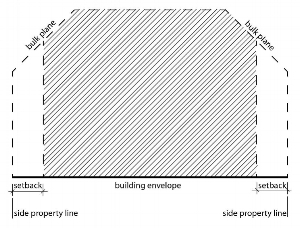It was really difficult deciding on the title for this article - yes, a trivial point, but one that, embarrassingly enough, had me stymied. A torrent of apt title options came flooding to mind: Is it Worth It? Will I Go Bald in the Process? Rogaine, the Secret Defender of Home Remodelers, The Pros of Tent Living, Hide the Matches, I Want to Burn it All, Archaeological Tips to Removing Dust, The Art of Maintaining Make-up under a Gas Mask,...
From someone who has seen many new home and home remodel projects, I have never seen anyone anything but thrilled by the end. This may make you laugh, but there are two keys here: my exposure is limited to the clients I've worked with and, please note, the phrase 'by the end.' The entire process, design and construction, can be crazy-making. And yes, you do hear horror stories and yes, there are people out there whose experiences would cast a completely different light. (They have my complete empathy!) However, with the right team and the right expectations, you can have an overall positive experience, one that leaves you confident you made the right choice.
Managing Expectations - The Dos and Don'ts
(For more information on any of the topics touched on below, please see our more detailed articles or send us a question.)
Do expect that this is not for everyone. It can take several months to complete a project from start of design through end of construction. And during that whole time, it can demand quite a bit of your attention at various moments. It can be like having a niece or nephew move in with you, but a niece or nephew that's going through their early teens: they're demanding, highly emotional, very talented at making you feel stupid and confused, and create moments where you find yourself mechanically reminding yourself you do love them as you stare more and more intently at that glass of wine. But just like teens, your home will grow out of it and become a place you feel a glow of love for.
Don't expect to love the process at every step of the way. It is ok to develop a love-hate relationship with the process. Like all processes, you will not love every step of the way. Parts may feel like a chore. At times like those, just remember your home will be worth it!
Do expect the process to take some time. As mentioned before, the entire process, from the moment you first consider the possibility of building or remodeling, to the moment you unpack your last box in your new home can take several months. The time will vary based on the size of your project, how quickly you are able and willing to make decisions, and your design and construction team's schedules. However, your project's timeline should not be amorphous. As you move forward, you will have an ongoing conversation with your team about your timeline. There may be changes to it along the way, but they should all be reasonable and explained to you by your Architect or Contractor.
Don't expect the designers to get it right their first try. Design is an iterative process. Your designer/s should listen to you very carefully and then develop a design that reflects what they have understood from you. However, just as in every conversation, a lot can get lost in translation. Also, it's easy for an idea to sound great but lose its luster once it's drawn out. For these reasons, they should be asking you lots of questions and showing you a series of drafts. And you, in turn, should be giving them as much frank feedback as possible. This will enable you both to get on the same page.
Do expect to see ideas you've not thought of before. Your design and construction teams should not be just following your orders without bringing anything else to the table (unless you too are a design or construction professional with lots and lots of experience). You are paying them after all. After listening to your wish list and studying your house, your designer/s should be able to see better suited, more efficient, or just more fun ways of doing things. They may not be large ideas and, unless expressly requested by you, they probably won't be crazy idea (sometimes there are limits to what is allowed or can be accommodated), but you are paying them for their talents. They should be able to bring to the table ideas, regardless how subtle, that make the end product, your home, feel and look and work all the better. Make certain you get your money's worth.
Don't expect to get everything on your list. With budget, timelines, zoning restrictions, and competing design ideas, not everything from your wish list may make it into your design. For that reason, prioritize and keep in mind the big picture!
Do expect to have homework. You are hiring professionals, but there is still plenty for you to do. You will be making a lot of decisions: designers, contractor, spaces you want, styles you want, product selection,... But again, with the right help, this can be much easier than it may seem at the start.
Don't expect the budget to be spot on. Ballpark budgets are the numbers thrown onto projects early in the design process. Generally at this point, none of the details have been decided on, subcontractors have not walked the project yet and the contractor who usually creates the ballpark budget has little time to put it together. With all these dynamics at play, ballpark budgets are never accurate. Our rule of thumb is to add at least 30% to any number you're given at this stage. This will still not be accurate, but it will at least help lower the risk of fainting as soon as you see the control budget.
Do expect the unexpected. This is especially important for those of you with remodel projects. There is a limit to what can be known, such as what is inside your walls. For this reason, it becomes prudent to discuss with your contractor the possibilities of unknowns, how a budget can be structured to absorb most unknowns, and to prepare yourself to be flexible.
Don't expect it to be all bad. After all these negative comments, it can be hard to imagine that the process can be at all enjoyable, but it can. Like school. Yes, there were endless, tedious worksheets for subjects you would never pursue post-graduation. Yes, you found yourself studying for a P.E. final exam (size of a basketball court? are you kidding me?). And yes, it was so important that it could feel daunting and stressful at times. But it was also where you were able to design the foundation for your future. A home is like that, too. You are creating a space that will directly impact, perhaps radically so, the way you are able to live. And just like school, with the right people around you, even the would-be stressful and tedious moments can be enjoyable.
Do Give Yourself a Break - Literally! If you let it, a home project can be all encompassing, taking every spare moment you have. If you're under time pressure, or just do better to ripping the bandaid off quickly, then do what you need to get the project done, even if it means filling every moment in your day. But if that's not the case, then give yourself plenty of space from the project. Preserve at least some of your free time, and family time, and staring off into space time (if you have such a wonderful thing!). We all need a break here and there and generally, at least per my experience, we tend to make better decisions when we get a moment away from it all.
And Do Give Yourself a Break - Figuratively! This will be your home. Homes are like the people we love. They fit us. They reflect us. But they are by no means perfect. The tile you pick, the layout of the bathroom you select, how the molding at the ceiling ties into the window trim - none of it needs to be what an editor at Architectural Digest would deem perfection. It just needs to be you. Individual pieces that come together to create the space where you will feed your friends, play with your family, and sit in your pajamas curled up on your sofa enjoying your evenings!

